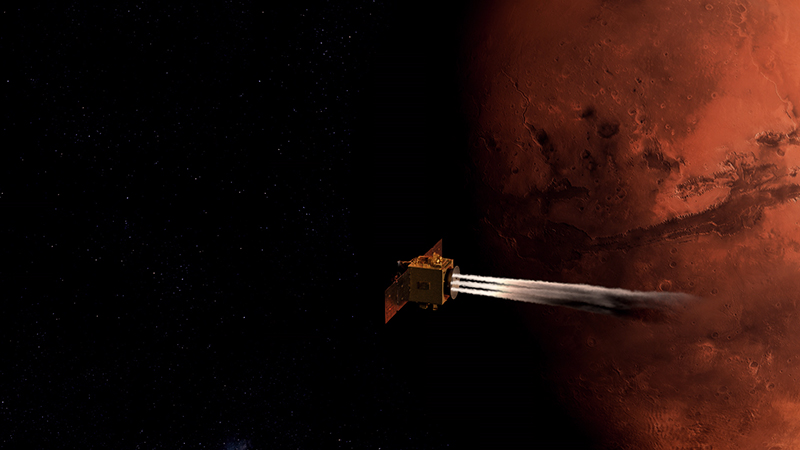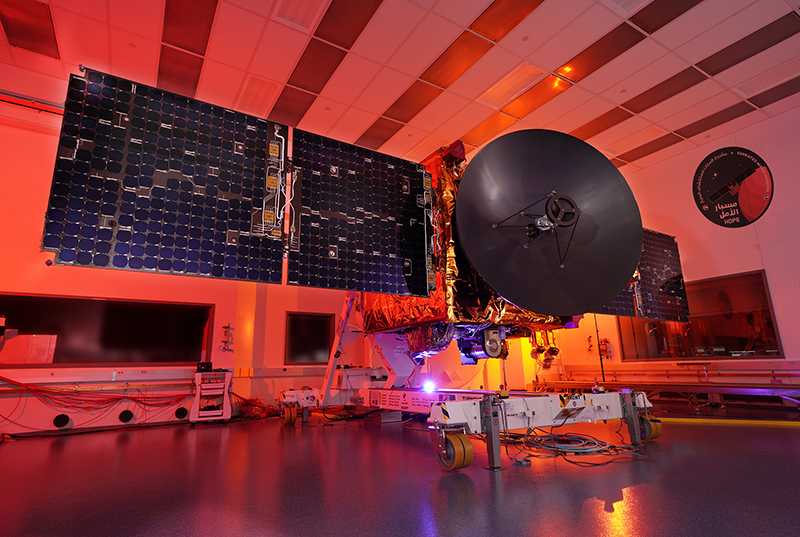News
Johns Hopkins APL Technology Helps Mars Mission Phone Home
The Emirates Mars Mission, also known as “Hope,” eased into orbit around the red planet on Feb. 9, sending word of its progress to operators on Earth using a novel radio provided by the Johns Hopkins Applied Physics Laboratory (APL) in Laurel, Maryland.
The first interplanetary mission built and operated by the United Arab Emirates, Hope will study the dynamics of the Martian atmosphere, aiming to build the first full picture of Mars’ climate throughout a Martian year. The probe’s trajectory through cruise to orbit insertion was tracked closely by the mission operations center at the Mohammed Bin Rashid Space Centre (MBRSC) in Dubai.
Hope is carrying the latest version of APL’s Frontier radio within its communications subsystem. The Frontier is a versatile telecommunications device proven on missions from the Sun to Pluto and beyond. As a software-defined radio — where software is used to customize the radio for specific mission requirements — the Frontier is smaller and needs less power than other deep-space radios, and can send and receive signals in a wide range of frequencies.
The Frontier radio has considerable heritage, including its role in the APL-built Parker Solar Probe. It has performed beyond expectations over Hope’s seven-month trek to Mars, starting with the first signals sent home about an hour after liftoff from Japan’s Tanegashima launch site on July 19.
“We worked with APL to specify and integrate the Frontier radio into Hope’s communications subsystem and were pleased with its performance through our reviews. We’re equally pleased with its performance throughout the mission so far,” said Khalifa Al Mheiri, telecommunications subsystem lead at MBRSC.
“We look to improve on each version,” said Philip Huang, the Hope Frontier radio systems lead in APL’s Space Exploration Sector. “We track how the system operates on each mission, and with a few design changes we make it smaller, lighter and more efficient — all very important considerations for spacecraft missions.”

